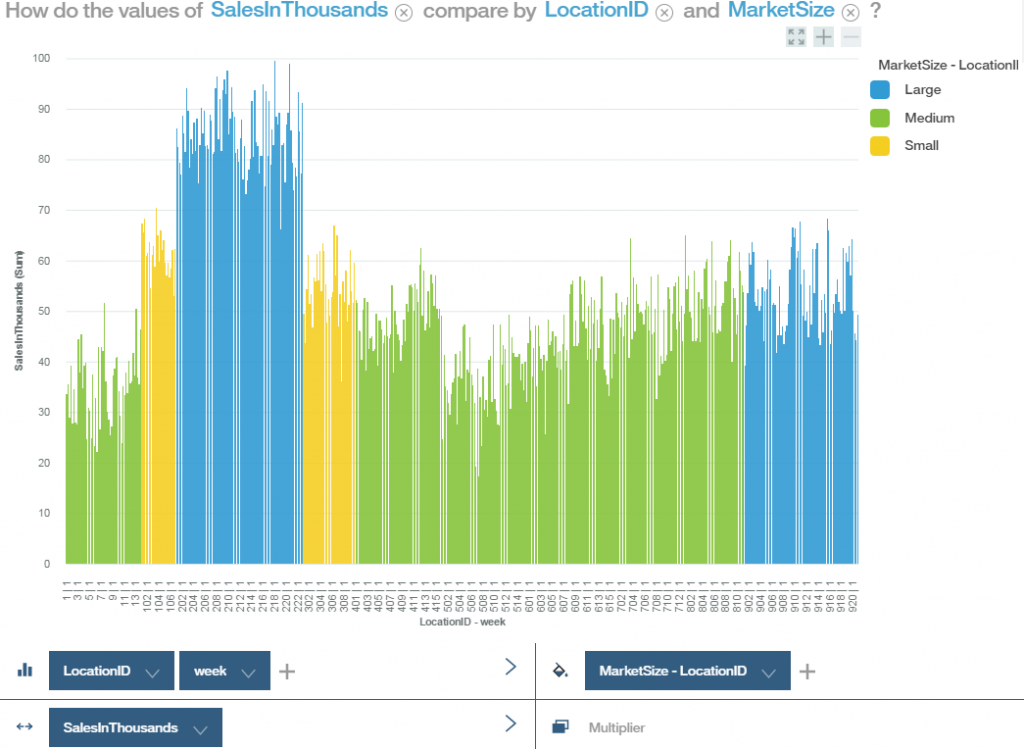Big-Data has become a trending topic over the last few years, and the field of data science is growing exponentially. Still though, professionals in the field remain scarce, and while those few experts are kicking open office doors and brandishing their newfound salary negotiation leverage within top corporations, smaller companies find themselves floating in limbo.
Most small businesses (SMB’s) can’t justify spending six figures on a data scientist, nor do they possess as many customer touch points as some larger blue-chip organizations. That leaves SMB’s contemplating the true necessity of staffing a full-time data scientist. Overpaid and underutilized are not attractive prospects for most employers. However, SMB’s can still benefit from data science, which can provide valuable metrics when it comes to improving upon the customer experience by researching, tracking, and analyzing customer data.
A data scientist — not to be confused with the similar expertise of a data analyst — intends to improve upon all facets of data aggregation, integrity, and analysis within an organization. So what do these mavericks of data science actually do? In short, they structure aggregation pipelines, tweak analyses, and format data presentations in ways that provide valuable observations from the otherwise unintelligible heaps of statistical data.
In the process of collecting data, one of major differences between scientist and analyst, falls under the realm of the data scientist. How is an organization retrieving customer data? Are there methods for data collection that would provide a more relevant data-set for an organization’s specific goals? How is employee data collected? Which metrics are required to enhance a marketing strategy? These are the tasks data scientists are faced with analyzing, adjusting, and maintaining.
Data science can act as a launching point for complex marketing campaigns that require historic research combined with the perceptibility to adjust marketing strategies based on real-time feedback. Data science can be a valuable tool, especially when considering the digital landscape of today, which is a data-driven sort of feedback system powered by user interaction and input. This is clearly reflected by marketing methodologies that have started to account for the fact that a single rogue Tweet or distasteful Facebook post has the potential to destroy an entire marketing campaign.
All things considered, the field is still in its infancy, and as market infrastructures adapt to accommodate the torrents of useful data, data scientists are being sought out, and over the coming years are certain to be churned out by major universities.
Evolution of Data Science
The data science of today is evolving into more than static data-set thumbed into an excel spreadsheet and chipped away at with customized arithmetic formulas. Machine learning and data predictability are spearheading growth within the field, and while we are still a few years away from having our data funneled into a crystal ball, this presents an interesting argument for not needing to have a full-time data scientist on hand.
Technology is getting very smart, and that combined with intuitive UI’s and a generation groomed to interface with such: suggests the idea that there may be little need for experts outside of the realm of software development and maintenance for data-driven tasks in the future. If you want to be at the forefront of this dynamic field, it might be beneficial to learn more about a Master of Data Science online at UNSW, for example. Find programs that delve deep into the intricacies of data analysis, ensuring that graduates are well-equipped to navigate the ever-changing digital realm.
For startups, it certainly isn’t feasible to go after an expert in the field. However, there are options for smaller companies when it comes to data science. Think about the kind of information that would benefit your company. What sorts of questions do you need answered to improve interactions with your customer base? Is there a prospective demographic that you need information about? Outsourcing or contract work is a great option for smaller organizations, especially if you require data analysis for a specific marketing campaign. Do some research and sift through a wealth of talented freelancers out there who would be happy to pull, organize, or optimize your data on a smaller budget.
If you’re more of a DIY’er, some popular tools & companies that can help put data to work for you are:
-
IBM Watson Analytics
-
Google Analytics
-
Google Trends
-
Buzzsumo
-
BigML
-
comScore /Rentrak
These days the vast majority of companies have some sort of digital presence whether it be through social media, mobile apps, or websites. All of these, when interacted with, represent possible data points which can be collected and analyzed.
That said, it’s still difficult to quell the collective eye roll when retweets or Instagram likes are brought up in a staff meeting, but although these platforms were initially created for entertainment purposes, they also act as voting systems and can point to things that work and don’t work for your company. Reputation equals revenue, isn’t that what they taught you in the macroeconomics? All kidding aside, there are ways to collect and analyze data without the need to obtain a Ph.D. in the field.
IBM Watson Analytics offers tools which let you upload data, then spits out useful analytics and nifty visualizations that can help you slice your company’s data in a way that supports your data-based decision making.
The example above utilizes IBM Watson analytics’ free tool and presents sample data in which you’re able to visualize sales organized by market size, and location over a week’s time period. Presumably allowing you to target and correlate sales with geographical regions, and time periods where your ad campaigns, or products were more positively or negatively received.
Another free tool that has become a necessity for bloggers, and corporations alike is the Google Analytics. User behavior on you company’s website or blog can provide crucial information, like bounce rate, peak traffic periods, and location. All of which, contribute to better understanding and interactions with your customer base. A few clicks deep in the Google analytics user subsection will have you swimming in data. Everything from age, gender, location, information about the user’s specific interests, and even what browsers or mobile devices they’re using. All of these metrics even on a smaller scale can provide crucial insight into your customer base.
Have you found yourself pondering when the best time is to publish a blog post about a certain topic? Maybe it’s during that spike in activity that your company’s website gets at around 8:00 p.m. CST on a Monday night after football season has ended. The point is: being in the business actively collecting data arms you with the ability to compare approval ratings, site visits, sales, search queries, and yes, even Facebook likes, but more importantly it allows you to take that information and put it to work for you. The data doesn’t lie, and while some of the assumptions about your marketing campaigns may seem intuitive, a lot of it just isn’t. You may not have that gilded piece of paper, but you can be your own data scientist and reap similar rewards.












Pingback: How to Conduct Market Research, Without Hiring an Outside Firm - StartUp MindsetStartUp Mindset
Pingback: How to Build Brand Loyalty Even If You Have a More Expensive Products - StartUp MindsetStartUp Mindset